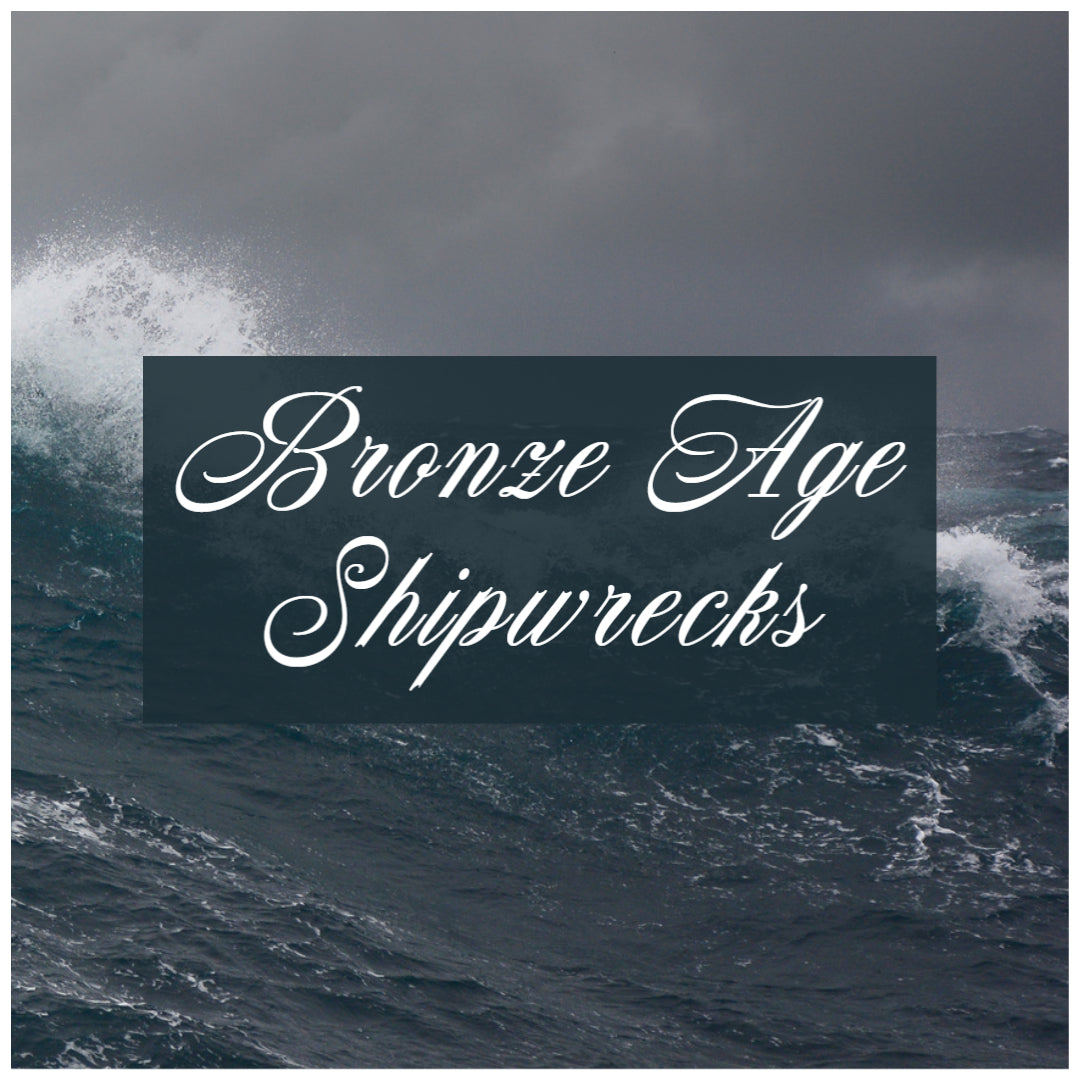
Bronze Age Shipwrecks
Shipwrecks have always conjured a romantic notion in our heads; the riches they carried, the loss of life, the possibility of a perfectly preserved time capsule beneath the water. Above all, they have always been considered a source of abundance - whether it's the physical wealth of gold and gemstones or a wealth of information. The Bronze Age (3,000-1,000 B.C.) spurred the birth of civilization, allowing humankind to build cities, create architecture and written language, and build wealth. Artifacts from this time are incredibly rare, but also incredibly important to understanding how early societies developed. The Bronze Age was not only a time of innovation and development, but also a time of invasion and war and what caused the rise was also responsible for the fall.
International travel was exploding at a rate never before seen, with trade routes being established throughout the world. Ancient civilizations depended on each other, mostly for raw materials, but also for luxury goods. The Uluburun shipwreck, discovered off the coast of Turkey in 1984, provided an ideal representation of the kinds of items being traded and how they were transported. A late Bronze Age vessel dating circa 1300 B.C., the ship is thought to have originated near present-day Antalya, Turkey, bound for mainland Greece with a hold full of trade goods. The majority of the cargo was tin mined in Afghanistan and copper mined in Cyprus (the raw materials used to create bronze), 130 amphorae vessels of terebinth resin (a wine preservative) from Israel, 350 kilos of glass ingots (typically used for jewelry), 24 logs of ebony wood, as well as ivory, fine jewelry made from all manner of precious metals, figurines, weapons, Baltic amber, ostrich eggshell vases, and perishable goods like herbs, spices, olives, almonds, grapes, figs, and grain. With a ship of such high value and variety of goods on board, archaeologists speculate that it was possibly a gift to a ruler. Personal effects found suggest that the sailors themselves came from a variety of regions as well. Undisturbed by plundering, the Uluburun shipwreck is one of the finest time capsules archaeologists have ever discovered.
Amphora vases are also their own treasure trove of information. While used almost universally throughout the Mediterranean and beyond, each region had their own stylistic variation to the basic amphora form. The ceramic they are created from is known for absorbing miniscule amounts of the material stored inside. Even if they have seemingly only been filled with sea water for the past few millennia, scientists are able to gather DNA from long-gone perishables such as olive oil, wine and honey. On a large scale, the DNA tells us from what region of the world the item comes from, its value and how it was traded. On a smaller scale, it might provide insight into how food was prepared and preserved, perhaps even some reasoning on how some civilizations of the time were able to become so large.
Marauders also took to the sea and played a large part in the eventual collapse of the Bronze Age, with many ancient cities unable to survive their plundering. Because of this, the best surviving examples of Bronze Age artifacts have been found under water. Between being intentionally dumped into the sea prior to an invasion, piracy on the high seas, or because it was melted down to create swords or shields, bronze was a valuable resource that was not about to be squandered.
Once civilizations began to fall and trade routes were disrupted, many settlements that had become dependent on others were unable to survive on their own once more. Iron became the new metal of choice and some of the most important elements of these societies like their written language, economy, and social organization were lost, sometimes for centuries. Because of the shipwrecks that have been discovered from this time period, we have been able to learn about their rise, their fall, and everything in between.
To view this blog with additional photos, decor and furniture we have available click here!
Interested in reading our previous blogs? Click here!




Leave a comment
This site is protected by hCaptcha and the hCaptcha Privacy Policy and Terms of Service apply.